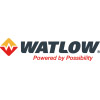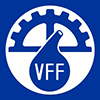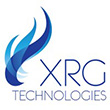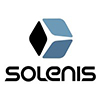-
Topsoe refinery Research & Development
Providing refiners with the best catalysts on the market would be impossible without the innovative ideas from Topsoe R&D. Combined with the knowledge obtained from our pilot plant units, catalyst development is essential to providing high-performing, customized solutions. Topsoe’s research facilities in Denmark have more than 50 hydroprocessing pilot plant units with more than 100 catalytic reactors for catalyst screening and process studies, including dedicated ...
-
Eliminate heat exchanger fouling with Watlow’s HELIMAX technology
Fluctuations within the heat exchanger to either the operating temperature or the mass flow rate are common causes of coking, which can lead to system failures and expensive downtime. Some heat exchanger design methods, like segmental baffles, have known dead zones where hot spots can occur, accelerating the coking process. Watlow’s HELIMAX ultra-efficient heat exchanger was designed to eliminate temperature-related failures. Leveraging our proven, patent-pending continuous ...
-
VFF supplies a wealth of column-related products and consultation services for the most diverse applications e.g.: - Absorption - Desorption - Distillation - Extraction - Drying - Cooling - Humidification - Water treatment - Droplet separation (demisters) - Desalination - Heterogeneous catalyst reactors - and much more
-
Biodiesel is a first-generation biofuel generated from vegetable oils, including soybeans, rapeseed (canola) and palm. With the ability to reduce lifecycle greenhouse gas (GHG) emissions by as much as 50% compared to fossilbased fuels, biodiesel fits well into the global ambition for clean fuels. Also known as FAME (fatty acid methyl ester), biodiesel is produced by the process of transesterification using biological feedstock, such as food crops, or latter-generation feedstock ...
-
New bypass line between diesel draw-off line to side stripper, new bypass valve, incl. update of P&ID, piping isometrics and pipe
-
Maximum catalyst protection and optimum pressure drop management. With the increased levels of heavy and non conventional crude oils in the refinery diets, state-of the art catalysts need state of the art Grading and Guard Materials to create the best working environment mitigating pressure drop and eliminating contaminants. Cycle length of a Hydroprocessing unit is typically controlled either by the catalyst activity (maximum allowable working temperature) or by the reactor ...
-
Hydrogen fuel conversion in fired equipment
Organizations are facing unprecedented challenges in achieving their strategic climate goals. Now is the time to evaluate options for hydrogen refuelling, efficiency improvements, and novel methods of CO2 reduction in fired heaters and boilers. You can reduce carbon footprints by refuelling fired equipment with hydrogen or ammonia. When planning a refuelling effort there is much more to consider than just the Wobbe Index and combustion performance. The system will experience ...
-
Optimise crude processing with the Profiler™
The Challenge: Refiners aim to optimise feedstock blends to improve margins, but variability can bring significant operational challenges during the process. One critical need is the efficient removal of solids, salts and water from crude feedstock. It is essential that washing of the crude is effective at removing high levels of these, and the oilcan be efficiently separated prior to crude distillation. Efficient separation needs accurate and reliable interface control to manage ...
-
Tracerco Diagnostics™ Invaluable insights for gas processing industries
With over 60 years’ experience, Tracerco’s range of diagnostic solutions provides gas processing industries with the insights they need to make informed decisions about their operations. Process Diagnostics™ Tracerco’s ability to diagnose process problems allows you to optimise productivity and minimise costs. Our innovative technology helps you ‘see inside’ your processes without needing to shut down operations, and provides the insights you need to troubleshoot ...
-
LO-CAT® process for costeffective desulfurization of gas streams
The LO-CAT® II process provides cost effective H2S removal for all types of gas streams in many different industries. The LO-CAT and LO-CAT II processes have achieved H2S removal efficiencies of 99.9+% in many different applications and industries. These applications include natural gas production, oil refining, biogas, landfill gas, coke oven gas, geothermal steam power production, CO2 production for beverage use, lube oil production, and many others. These applications range ...
-
You want to improve the utilization of the drum capacity? Due to the conditions in the coke drum, a level measurement is a very challenging task. Where other measuring technologies tend to fail or end up being extremely unreliable, Berthold‘s radiometric level technology is ideal for monitoring the coke level due to its non-intrusive nature. With Berthold’s solution for delayed coker units operators have a high repeatable and long-term stable measurement to increase the throughput ...
-
Why do many crude/vacuum units perform poorly?
In many cases it’s because the original design was based more on virtual than actual reality. There is no question: computer simulations have a key role to play but it’s equally true that process design needs to be based on what works in the field and not on the ideals of the process simulator. Nor should the designer simply base the equipment selection on vendor-stated performance. The design engineer needs to have actual refinery process engineering experience, not ...
-
Meet emission challenges with reliable Claus tail gas unit performance
Meet emission directives while improving your sulfur management. In today’s oil and gas industry, maximizing sulfur recovery from off-gases is extremely important. Regulations get tighter, forcing operators to constantly optimize the efficiency of their sulfur management units. Adding a tail gas treating plant to your Claus unit will enable you to meet the most stringent emission targets for final sulfur removal from the off-gases. The effluent from a Claus plant is the ...
-
Optimising the efficiency of shutdowns and turnarounds to improve processes
Tracerco’s diagnostic techniques provide you with the invaluable insights you need to reduce your turnaround times and costs by identifying operational process problems and mechanical integrity of internals in real-time and whilst online. Tracerco’s level, density, interface and multiphase nucleonic instrumentation provides invaluable insights to help you make informed decisions to increase profits, manage risks and reduce costs. Making data-driven decisions can significantly ...
-
Decarbonizing process heat with industrial heat pumps and steam compressors
Industrial energy consumption accounts for about 25% of energy demand and CO2 emissions worldwide, with process heat being the most common application. Hydrocarbon and basic chemical processing plants are particularly process heat-intensive. Heat demand for basic operations distillation and heating of fluids in US industry is about as energy intense as all other industrial heat applications combined. At the same time, there is a vast, unused potential for waste heat in many plant ...
-
Proven decarbonisation pathway for sustainable biofuels and chemicals production from waste
The flexibility to make use of varying waste streams as feedstocks to replace primary fossil resources is a common goal in operations today. You may be looking at sources such as woody and agricultural biomass, MSW, RDF, SRF, sewage sludge, or non-recyclable plastic to produce bio or circular chemicals or sustainable fuels: Bio Syngas, green hydrogen, SAF, sustainable maritime fuels, or BioMethanol. The key question is how to decarbonize these assets to meet sustainability and ...
-
Introduction to Sinopec Steam Cracking Technology
Sinopec has been committed to the development and application of steam cracking technology for almost 40 years, and has mastered advanced and complete ethylene technology which can process a variety of feedstocks, including CBL cracking furnace technology, 3 major ethylene recovery technologies (LECT, ART and AERP) and WAO. This webinar will introduce the technology and its applications, with an emphasis on how it can be applied in a variety of plants. By attending, you will ...
-
Introduction to the Sinopec Closed Coke Handling System
The Sinopec Closed Coke Handling System (S-CCHS) is a safe and eco-friendly closed petroleum coke removal, conveying, and storage system with remote intelligent operation for pollution-free coke removal. This webinar will introduce the technology and its applications, with an emphasis on how it can be applied in your delayed coking unit operations. By attending, you will gain insights into: - Components and operation of the S-CCHS technology - How S-CCHS can eliminate ...
-
Innovative solutions to shape the hydrogen economy
View this webinar for an insightful journey into the future of sustainable energy with Honeywell H₂ Solutions. In this exclusive webinar, we'll delve into cutting-edge innovations in hydrogen technology, focusing on Blue Hydrogen solutions and Liquid Organic Hydrogen Carriers (LOHC). Attending will offer these valuable benefits: - Discover how Honeywell is leading the way in transforming the energy industry through Blue Hydrogen, a game-changing process that reduces carbon ...
-
Covering your streams with gas chromatography: Analytical technique and key applications
Gas Chromatography is a critical part of any analytical lab in the refining process. It is such a standard that operators take for granted all the ways it is used. Join us as we will be touching on the importance of GC in the lab, what goes into selecting a unit, and three key applications seen in many labs: Refinery Gas Analysis, Group type Analysis with Reformulyzer pre-frac, and Simulated Distillation. In this webinar we will: - Give an overview of the importance of GC ...
-
Beyond processbook & PI vision: Exploring today’s industrial analytics tools
In the Manufacturing 4.0 era, industrial organizations have more data at their fingertips than ever, offering the promise of higher production rates, more consistent quality, and reduced costs through data-driven strategies. Standing between many businesses and this promise of process optimization are questions surrounding the right tools to harness this data effectively – a choice complicated by the shifting status of longtime standard OSIsoft’s ProcessBook and PI Vision ...
-
Overcoming roadblocks to decarbonisation
Reducing global CO2 emissions and limiting the increase in global average temperature to 1.5°C is probably the greatest challenge humanity has ever faced. The continuous increase in strength and frequency of natural disasters accompanied with record-high temperatures have drastically accelerated the need to take action to reduce our carbon impact. There is a global consensus between governments, companies, and the public that there is a need to decarbonise our societies and, ...
-
Biofilm: A hidden threat to refining and petrochemical operations
Did you know that a seemingly insignificant amount of biofilm can negatively affect heat exchanger reliability and efficiency and, as a result, significantly limit production? Attend this webinar from Solenis to gain valuable insights into risks and solution methodologies for biofilm issues. • Learn how biofilm can affect your profitability and production efficiency • Explore novel technologies from Solenis that mitigate the risks posed by biofilm • Hear about a leading ...
-
Mission critical electric heat tracing solutions to support the energy transition
Around the globe, clean fuels are helping reduce carbon emissions. And world leaders have pledged to invest in technologies such as carbon capture and hydrogen to help accelerate the clean energy transition. Biofuels, hydrogen, liquefied natural gas and carbon capture technologies are driving the transition to clean fuels and CO2 reduction. This webinar gives you the opportunity to learn how nVent RAYCHEM solutions for the energy transition markets can enable and optimize your ...
-
New digital tools to improve operational profitability in refineries
View this webinar to learn how you can leverage new digital tools as part of the Honeywell UOP upgraded PremierPLUS Performance Services offering to avoid unplanned downtime, optimize process performance, manage personnel changes, and reduce energy and emissions. The PremierPLUS Performance Services offering addresses these challenges and can improve operational profitability by an average of $1M to $5M per year. Attending this webinar will give you an overview of Honeywell ...
-
Maximizing renewable diesel and sustainable aviation fuel yields with ISOTERRA Technology
Investments in renewable diesel (RD) and sustainable aviation fuel (SAF) production are gaining considerable momentum and are expected to play a vital role in reducing carbon emissions for heavy-duty transportation. Currently, the majority of these projects focus on the production of HEFA (Hydroprocessed Esters and Fatty Acids). Chevron Lummus Global combines the renewable processing catalyst experience and technology of ART's ENDEAVOR™ catalyst system, CLG's hydroprocessing ...




































